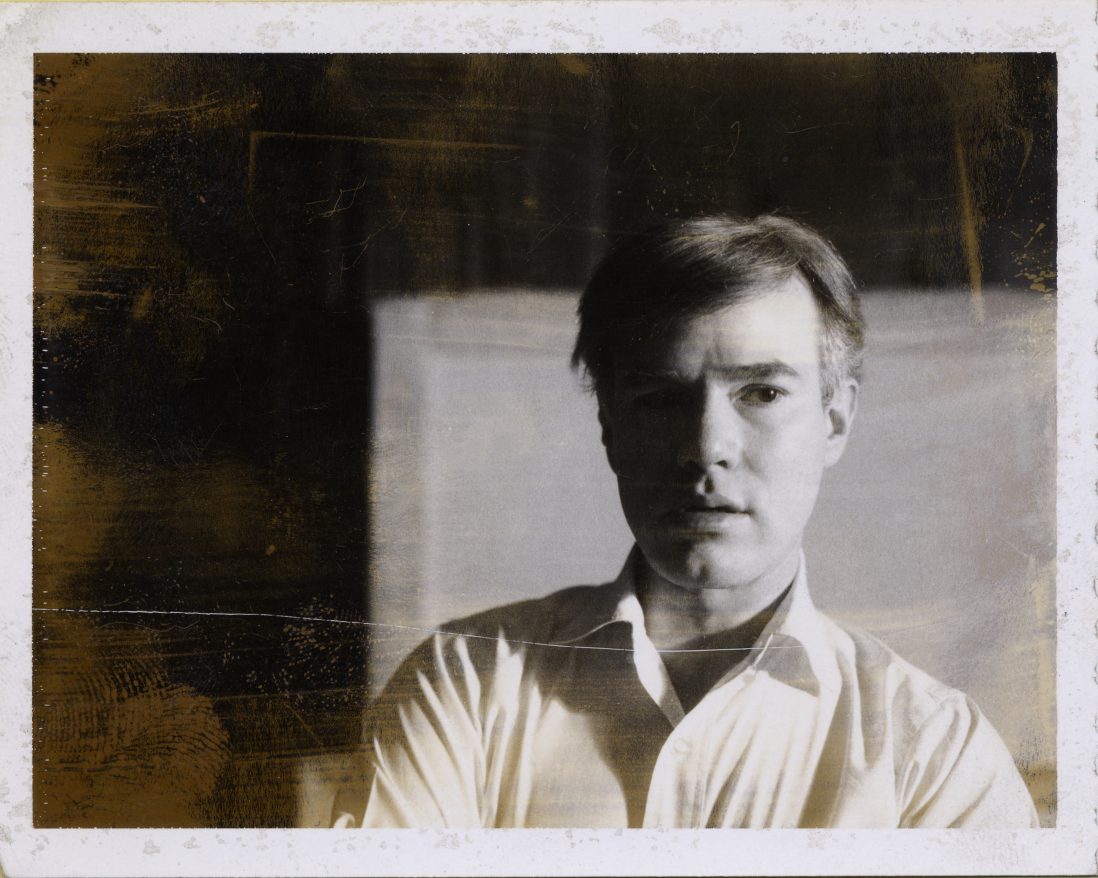
Andy Warhol, Self-portrait, 1962. Polaroid Blazon 47, 4 one/4 x 3 ane/4 inches.

Andy Warhol, Self-portrait, 1964. Photoboth photographs, half dozen x one v/8 inches.
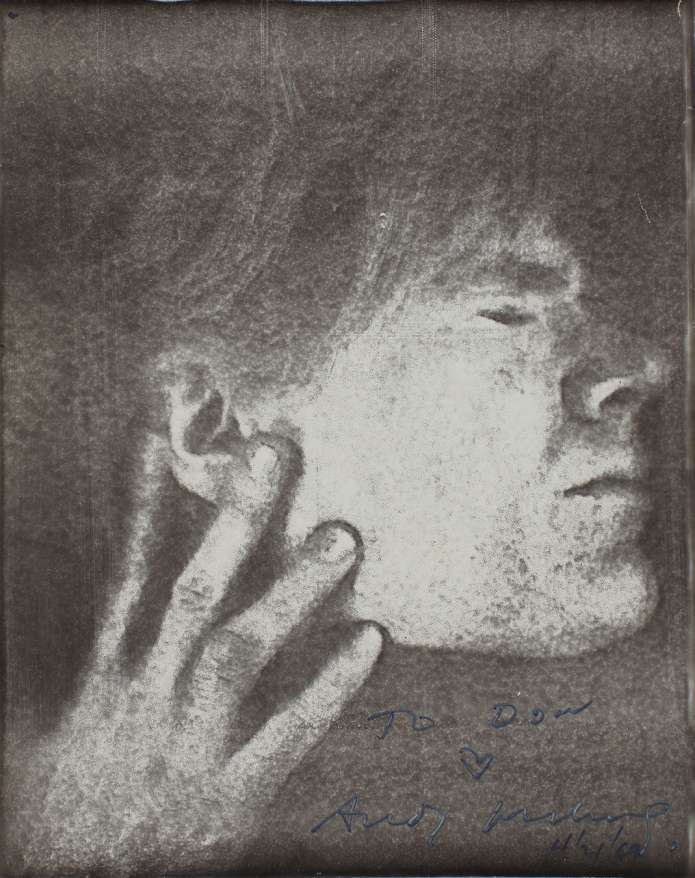
Andy Warhol, Self-portrait, 1969. Ink on Xerographic paper, 10 3/4 10 viii 1/2.
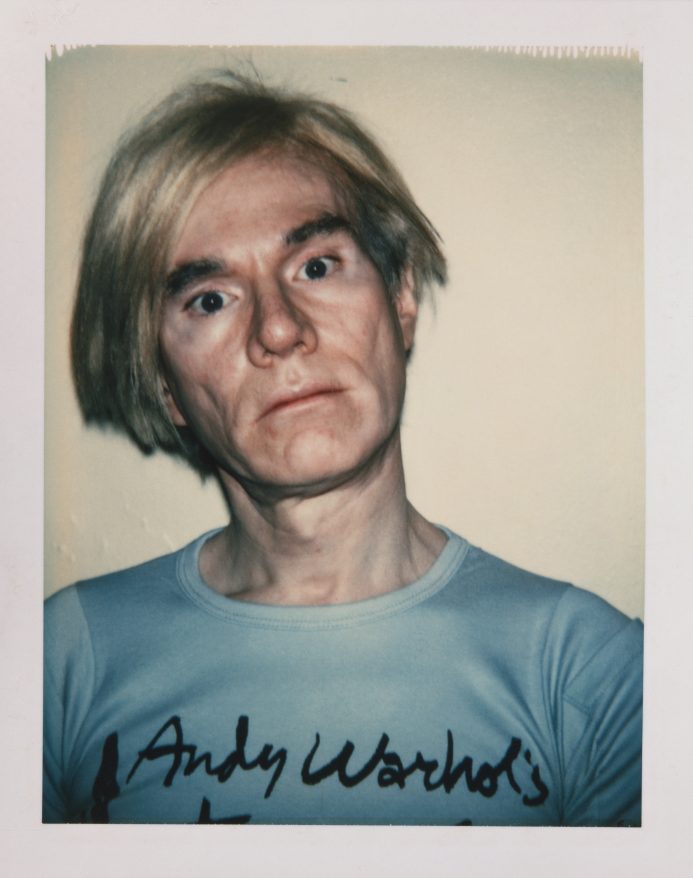
Andy Warhol, Self-portrait, 1977. Polacolor Type 108, 4 1/iv ten 3 3/eight inches.
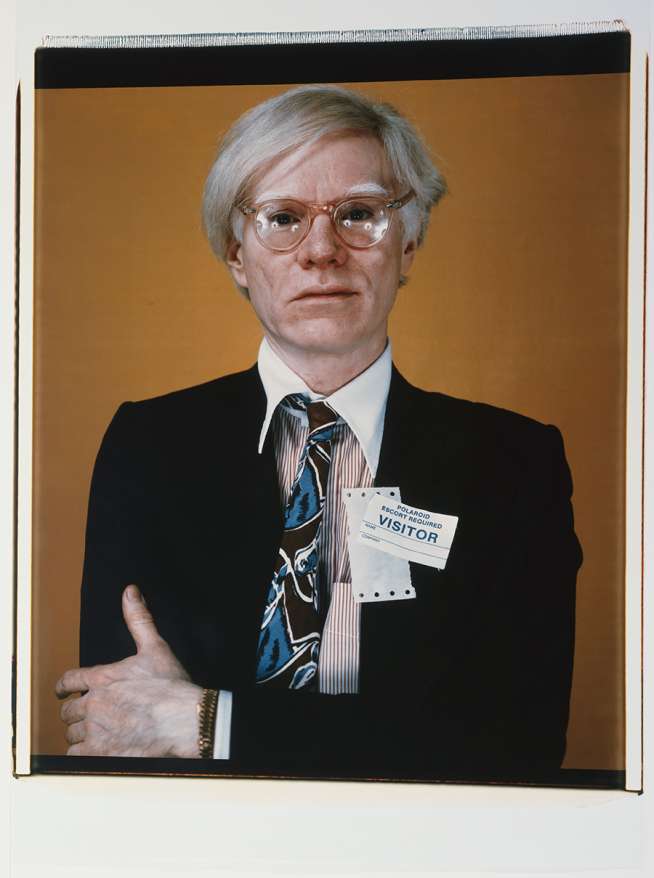
Andy Warhol, Self-portrait, 1979. Large-format Polaroid, 20 x 24 inches.
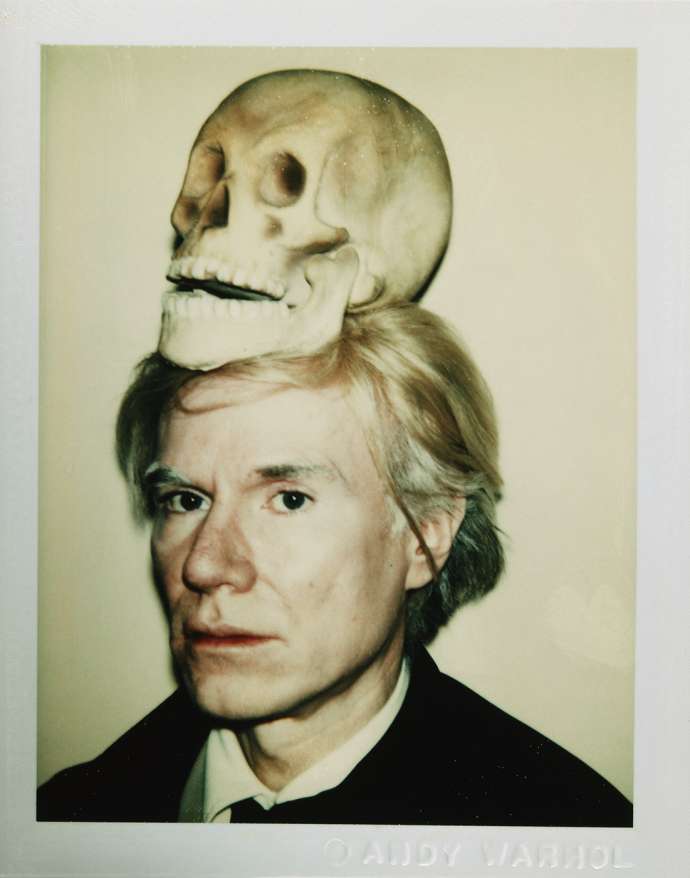
Andy Warhol, Self-portrait, 1977. Polacolor Type 108, 4 ane/4 ten 3 three/viii inches.
The Andy Warhol Foundation for the Visual Arts was established in New York in 1987. Although Warhol's ain radical artistic experimentation was cutting tragically short past his unexpected passing at the historic period of 58, he had generously made arrangements to help hereafter generations of artists interruption new ground. He called for the creation of a foundation dedicated to "advocacy of the visual arts," in his will, leaving nearly his unabridged estate to the cause.
Since its inception, the Foundation's purpose has been to support experimental and challenging new artistic activity in the most meaningful way possible, and to preserve and expand Warhol'south artistic legacy. Those two goals are intertwined: every initiative the Foundation supports is considered through the lens of Warhol's maverick arroyo to art and life, from his fundamental sense of freedom to be new and unlike, to his forward-thinking generosity.
We believe liberty of creative expression is central to an open and enlightened republic and are committed to promoting and defending it.
The Andy Warhol Foundation for the Visual Arts
To address Warhol's directive, the Foundation quickly put a grantmaking program into place that has since evolved into one of the land'southward top funding mechanisms to support innovation in contemporary art, awarding approximately $fifteen million in grants each year to creative person-centered 501(c)(3) organizations. Through its grants, the Foundation has funded hundreds of exhibitions, curatorial projects, and commissioning opportunities — often fueled by subversive and challenging ideas — at small, artist-run spaces, internationally renowned museums, and a range of experimental venues inbetween. In the spirit of its founder, the Foundation's philanthropic authentication has long been its nimble responsiveness to the moment and eagerness to comprehend new ideas and voices. The Foundation has been especially quick to address the irresolute needs of artists and shifting socio-cultural landscape, responding to the reduction in national arts funding in the 1990s past establishing and funding Artistic Capital letter, and by providing relief for artist-centered organizations affected past Hurricanes Katrina and Sandy and more recently the Covid-19 pandemic. To extend the achieve of its grants, the Foundation has designed and launched several initiatives over the years, including the Regional Regranting Program, which direct supports independently organized, public-facing, artist-centered activity in local and regional art scenes that lie beyond the accomplish of traditional funding sources, and Common Field, a national network of grass roots visual arts organizations.
We acknowledge our culture's systemic marginalization of artists because of race, gender, organized religion, historic period, ability, sexual orientation, and/or clearing status among other factors. Nosotros actively seek to highlight the piece of work of under-represented practitioners and back up efforts to address entrenched inequities.
The Andy Warhol Foundation for the Visual Arts
As the Foundation has matured, Warhol'southward profound philanthropic bear upon has grown to lucifer his immense influence on art and culture. As the chief steward of Warhol'south legacy, it has been the Foundation'south duty to foster understanding of that creative achievement while too embracing the democratic values that he espoused during his lifetime. Ensuring that the thousands of works in his manor were fabricated available to curators, scholars, and art enthusiasts, and likewise properly cared for, was among the Foundation'southward earliest missions. An active loan plan was quickly established, facilitating exhibitions of major paintings as well every bit previously unseen material. Artworks were also permanently placed in museum through a program that centered on museums which did not have significant Warhol works in their collections. The foundation enabled the museums to learn works by selling them at a substantial discount, making each conquering a partial souvenir from the foundation. Through this plan 103 major works by Warhol entered the collections of 24 museums throughout the country.
Recognizing the need for an contained institution to store, conserve, report, and showroom the estate'south holdings and present Warhol's legacy to the public, the Foundation joined forces with the Dia Art Foundation and Carnegie Museums in 1989 to cofound the Andy Warhol Museum in Pittsburgh, PA. More than 8,000 artworks and tens of thousands of archival objects from his estate were gifted to class the cadre collection of the museum and its study center, which continues to shed new low-cal on Warhol'due south multi-layered art and life.
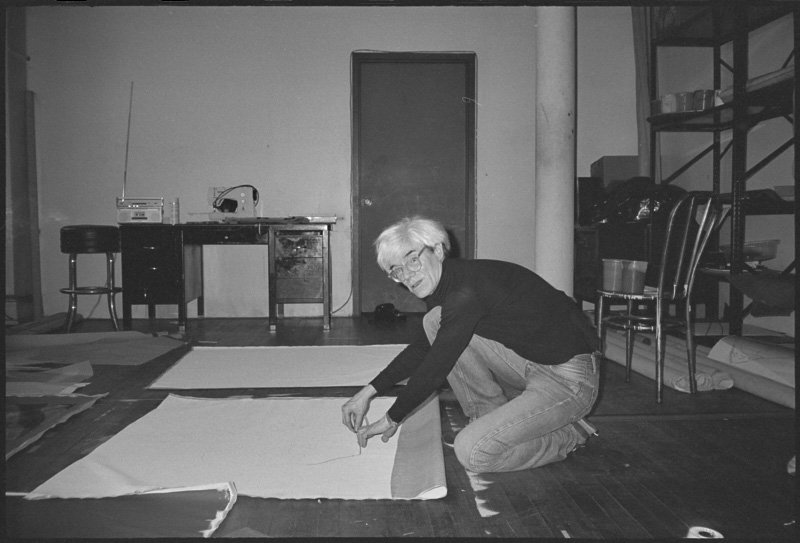
Andy Warhol, Self-portrait, 1983. Photographic reproduction from 35mm negative.
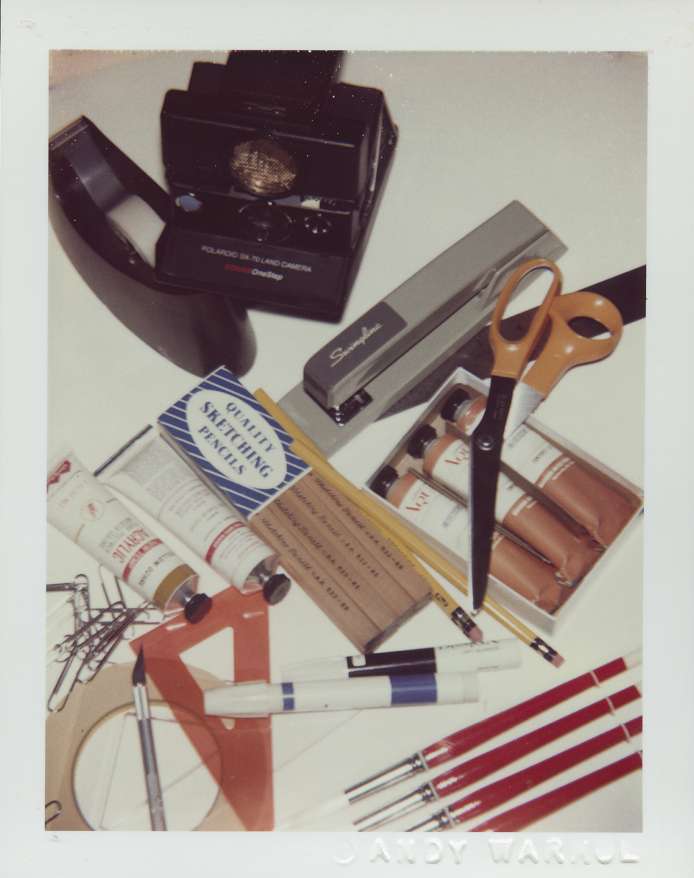
Andy Warhol, Artist'south Materials, 1982. Polacolor ER, four 1/4 x 3 three/eight inches.
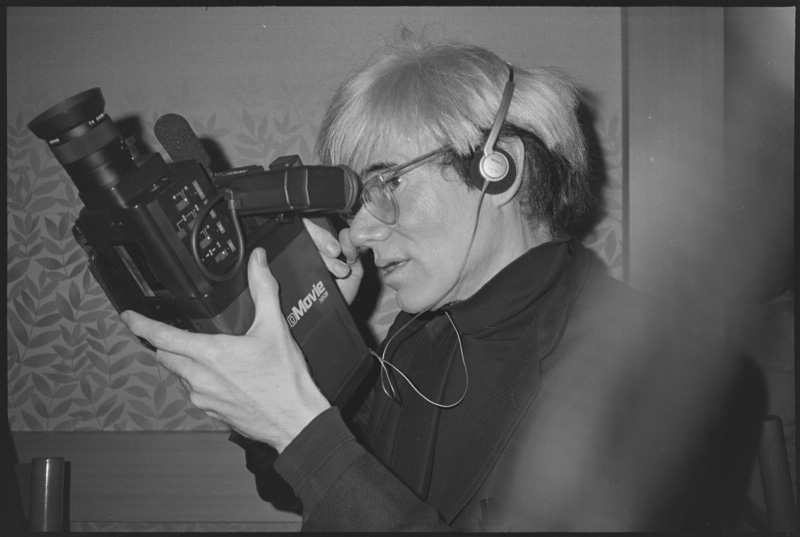
Andy Warhol, Self-portrait with Video Camera, 1984. Photographic reproduction from 35mm negative.
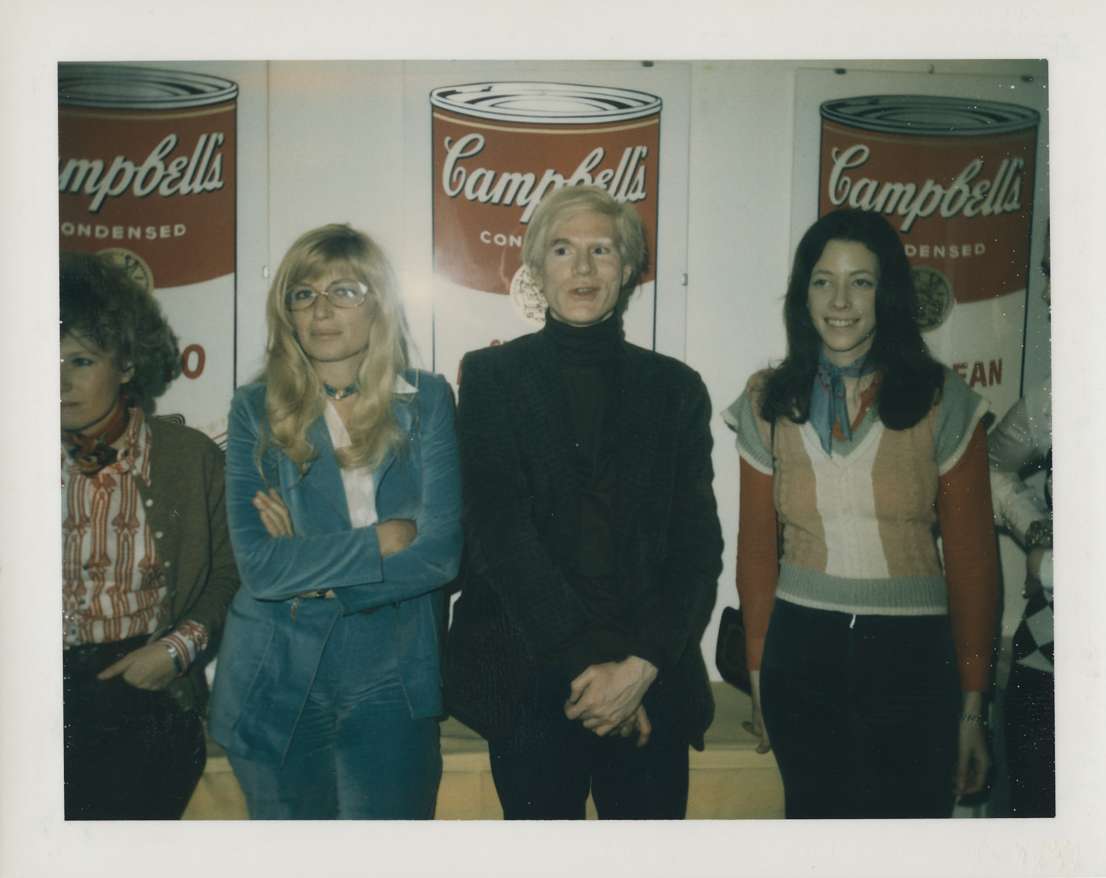
Andy Warhol, Self-portrait with 3 Women, 1971. Polacolor Blazon 108, 3 3/3 x 4 one/iv inches.
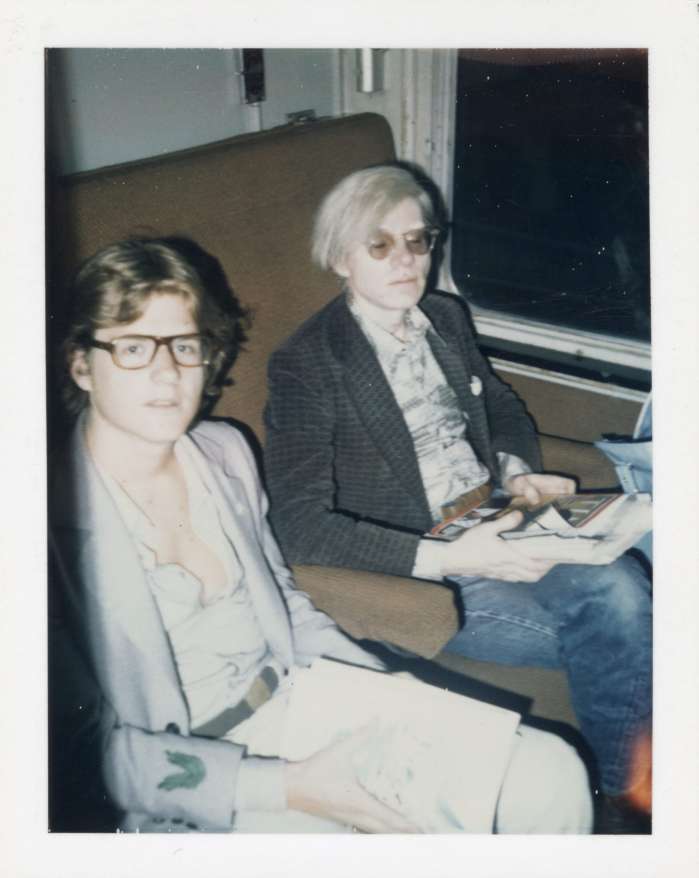
Andy Warhol, Self-portrait with Vincent Fremont, 1972. Polaroid glues to board, 4 1/4 x 3 3/viii inches.
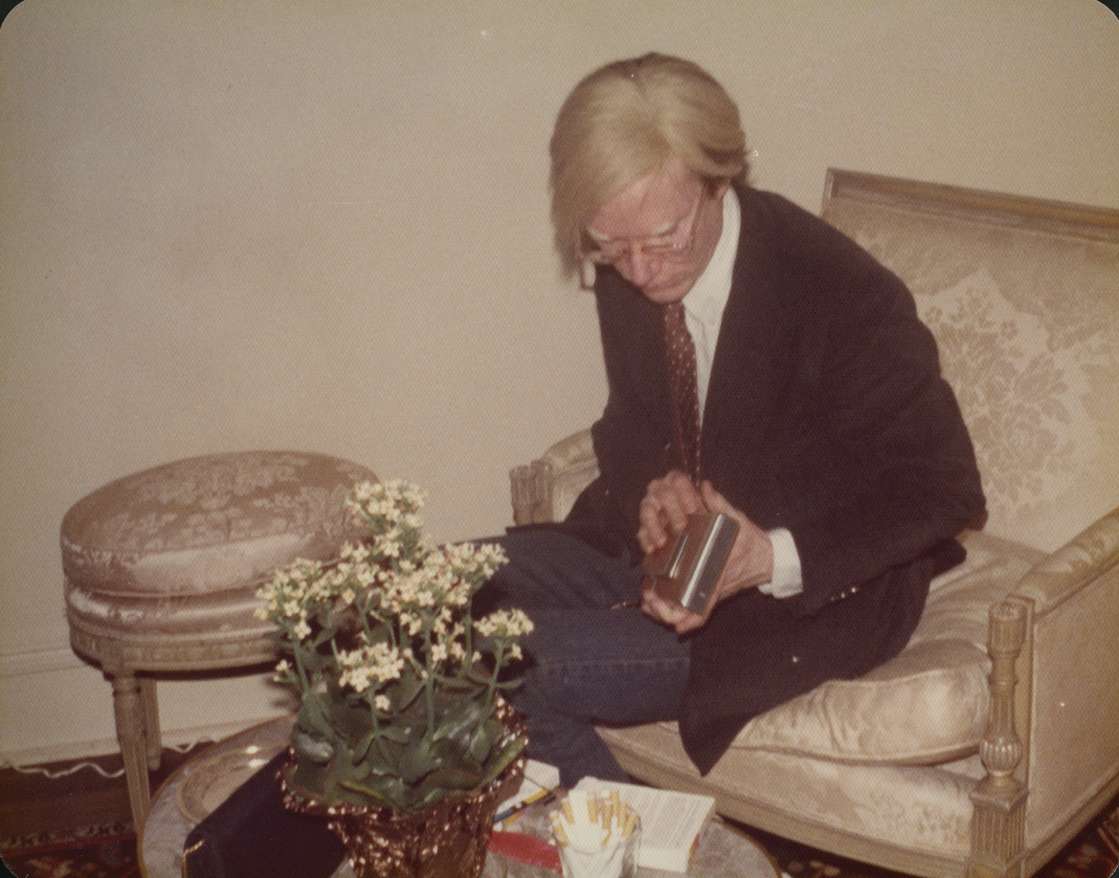
Andy Warhol, Self-portrait, 1970s. Color print, 3 1/2 10 4 three/8 inches.
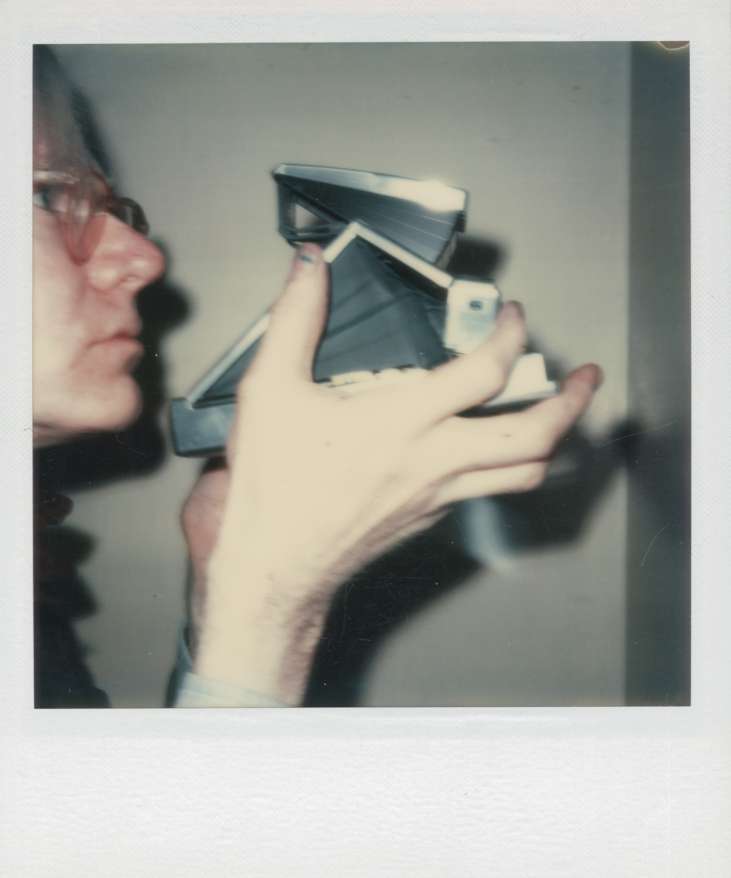
Andy Warhol, Cocky-portrait, 1972. Polaroid Type SX-70.
Efforts were likewise taken to innovate under-recognized bodies of work to the public through thoughtfully curated exhibitions and scholarly catalogs produced in collaboration with prominent commercial galleries. The gain from those presentations, forth with the advisedly considered sales orchestrated through Christie's, take vastly increased the Foundation's grantmaking capabilities. Institutional donations accept besides provided unprecedented opportunities for the public to view and study Warhol'due south lesser-known piece of work immediate. In 2007, for example, the Foundation launched the Andy Warhol Photographic Legacy Project, which gifted around 28,500 of the artist's Polaroids and silver gelatin prints to more than 200 college and university collections around the country. Over time, the Foundation has given roughly, 52,000 works of art to more than 320 museums.
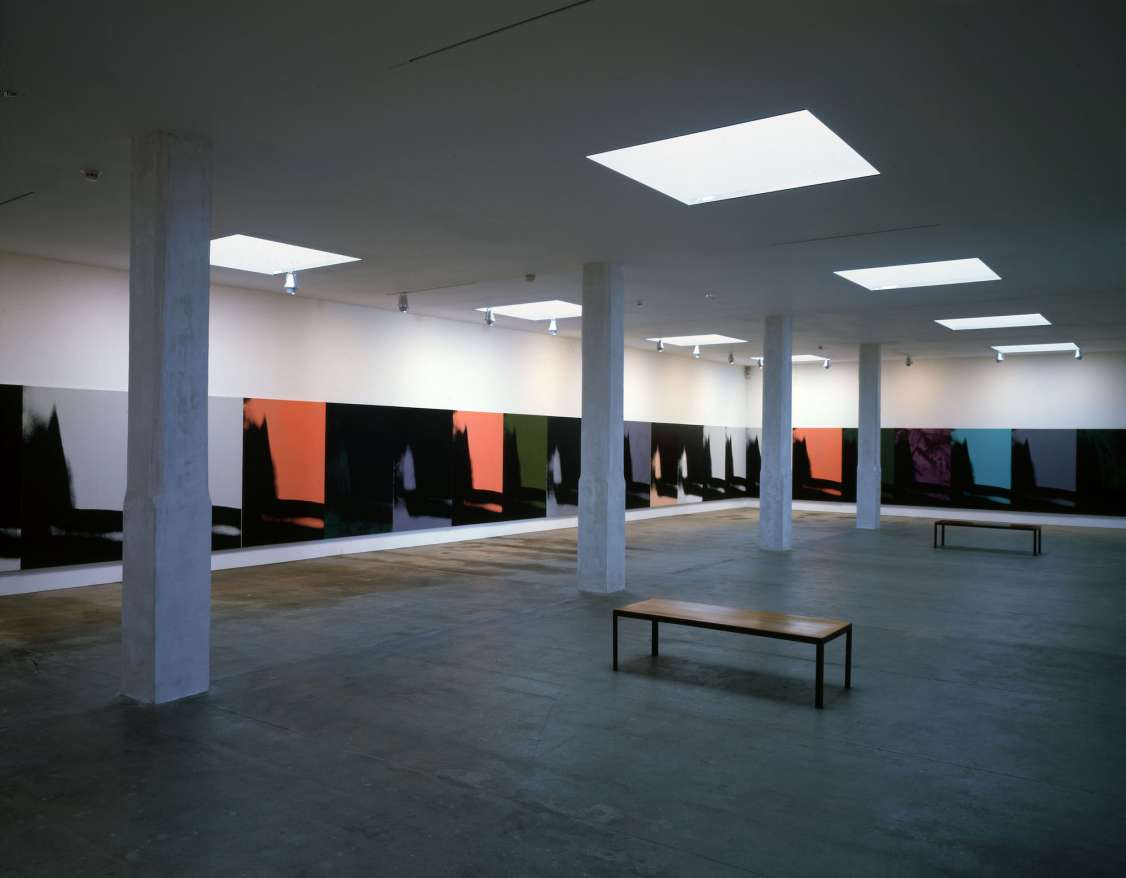
Andy Warhol, Shadows, 1978 - 1979. Installation view at the Andy Warhol Museum.
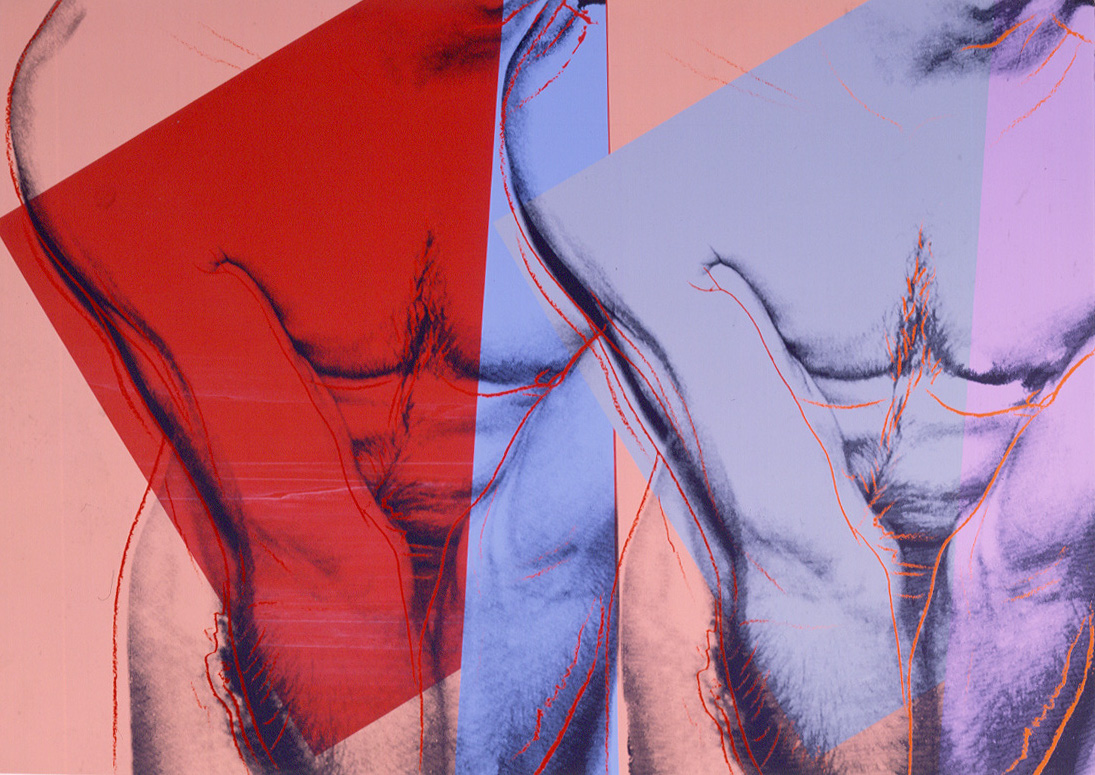
Andy Warhol, Torso Double, 1982. Silkscreen on Saunders Waterford hot-pressed paper, xxx 1/ii 10 43 i/3 inches.
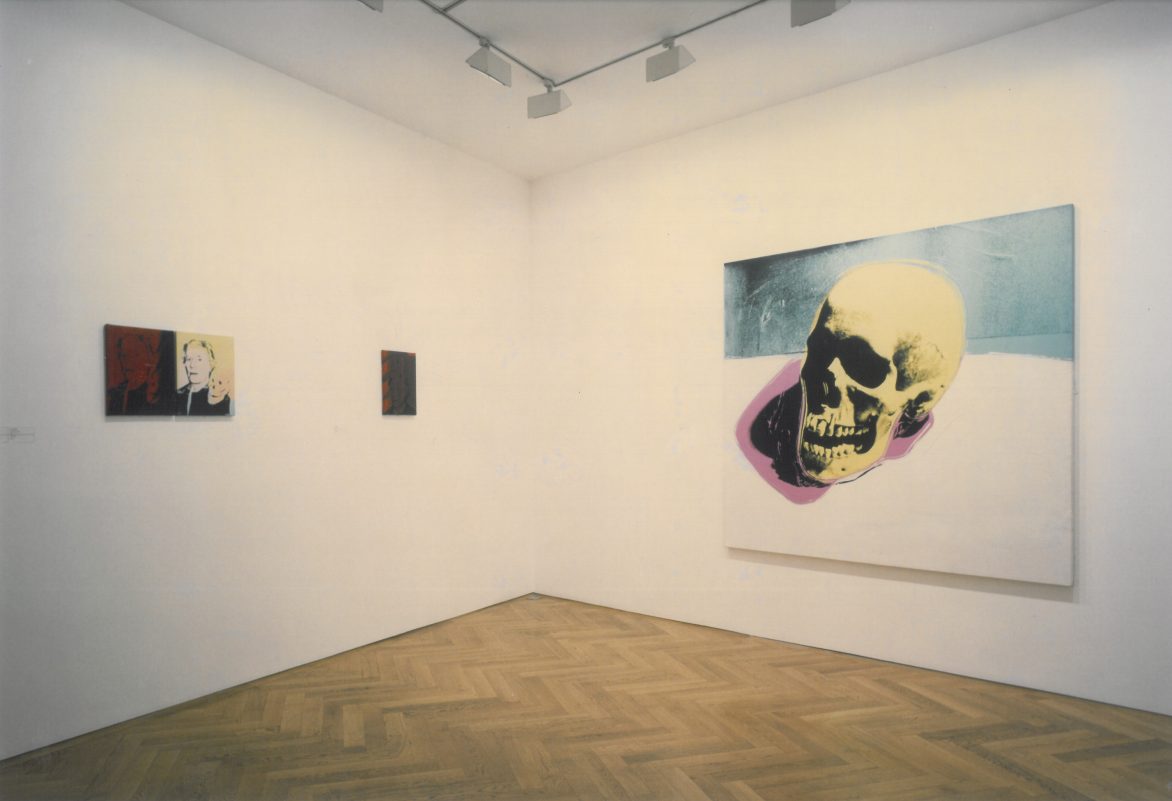
Andy Warhol, Vanitas at Anthony D'Offay, 1995. Installation view.
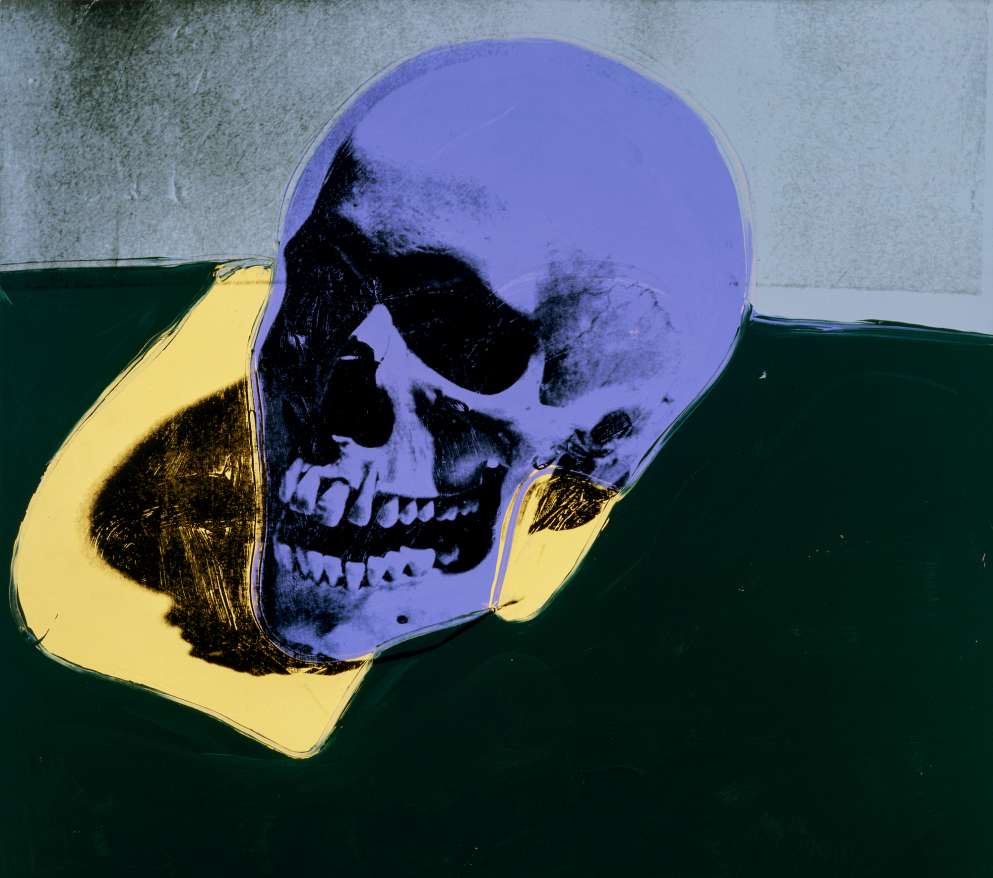
Paintings
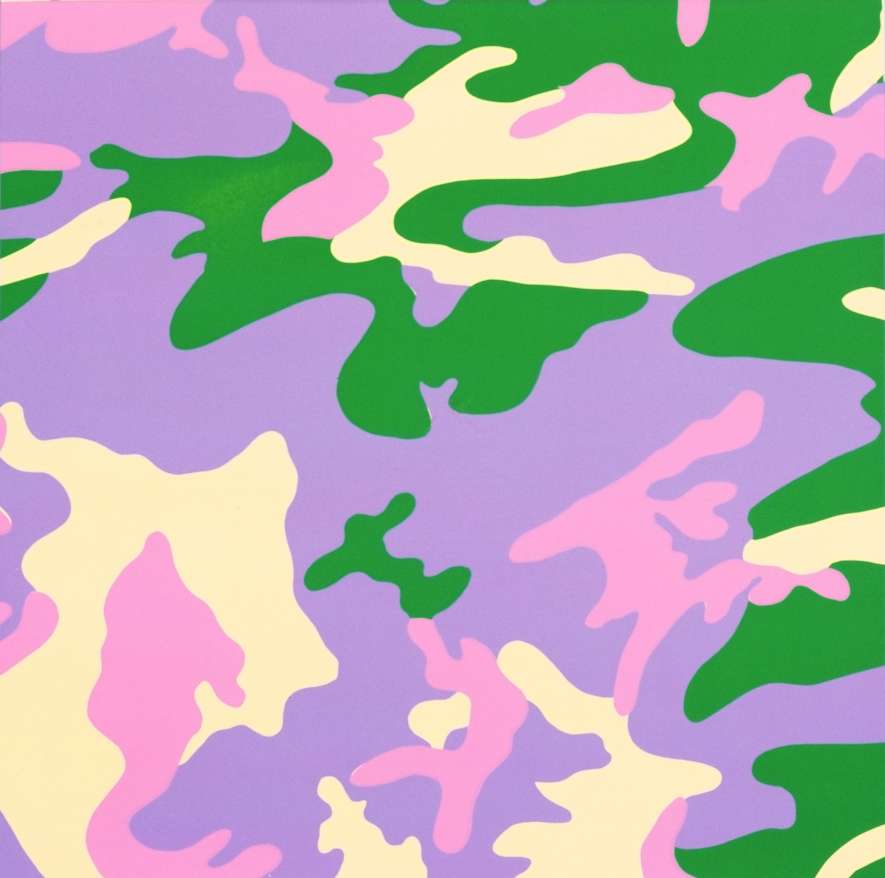
Andy Warhol, Cover-up, 1987. Screenprint on Lenox Museum Lath, 38 x 38 inches.
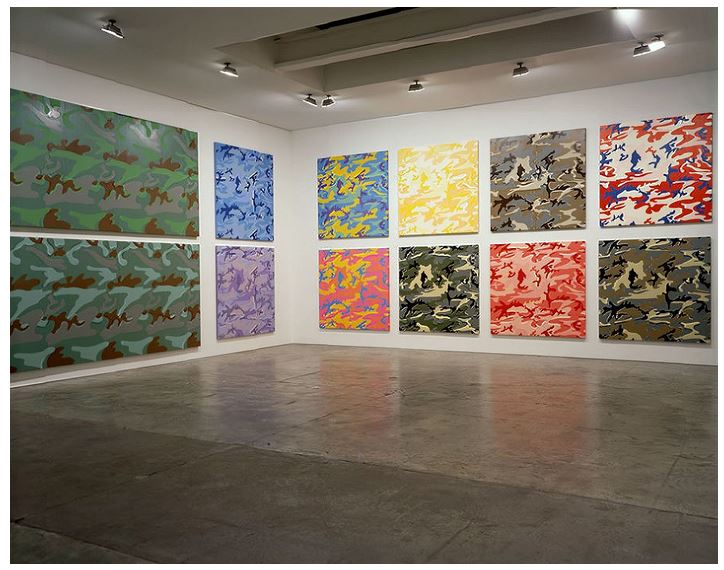
Andy Warhol Camouflage Paintings, Gagosian Gallery 1999. Installation view.
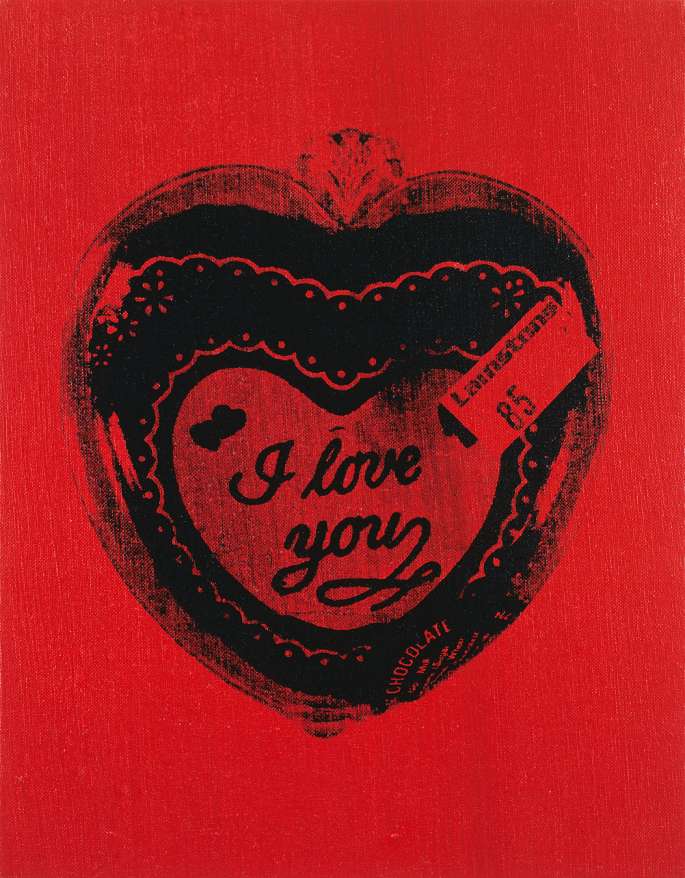
Andy Warhol, Eye (I Love Yous), 1984. Synthetic polymer paint and silkscreen ink on canvass, 14 x 11 inches.
Additionally, the foundation transferred the title to fifteen acres of prime number bounding main-front property in one case owned by Andy Warhol in Montauk, Long Island to the Nature Conservancy. The purpose of the donation was to preserve a department of the ecologically significant Montauk Moorlands and to promote the visual arts. As a condition of the gift, while maintaining the aesthetic and ecological attributes of the Andy Warhol Nature Preserve, the Conservancy has established an interpretive nature trail for visitors through this tract of mixed wetlands, woodlands, and coastal bluffs.
The Foundation's commitment to advancing Warhol scholarship is also exemplified past its ongoing sponsorship of the multi-book Andy Warhol Catalogue Raisonné: Paintings, Sculptures, and Drawings, a monumental undertaking that began in the 1980s. The Foundation took the helm of the project's rigorous research and ambitious production in the 1990s, and has since completed five volumes, published past Phaidon, with a sixth in preparation. Back up of impress and film catalogues raisonné take farther deepened understanding of the telescopic and depth of Warhol's tremendous artistic output.
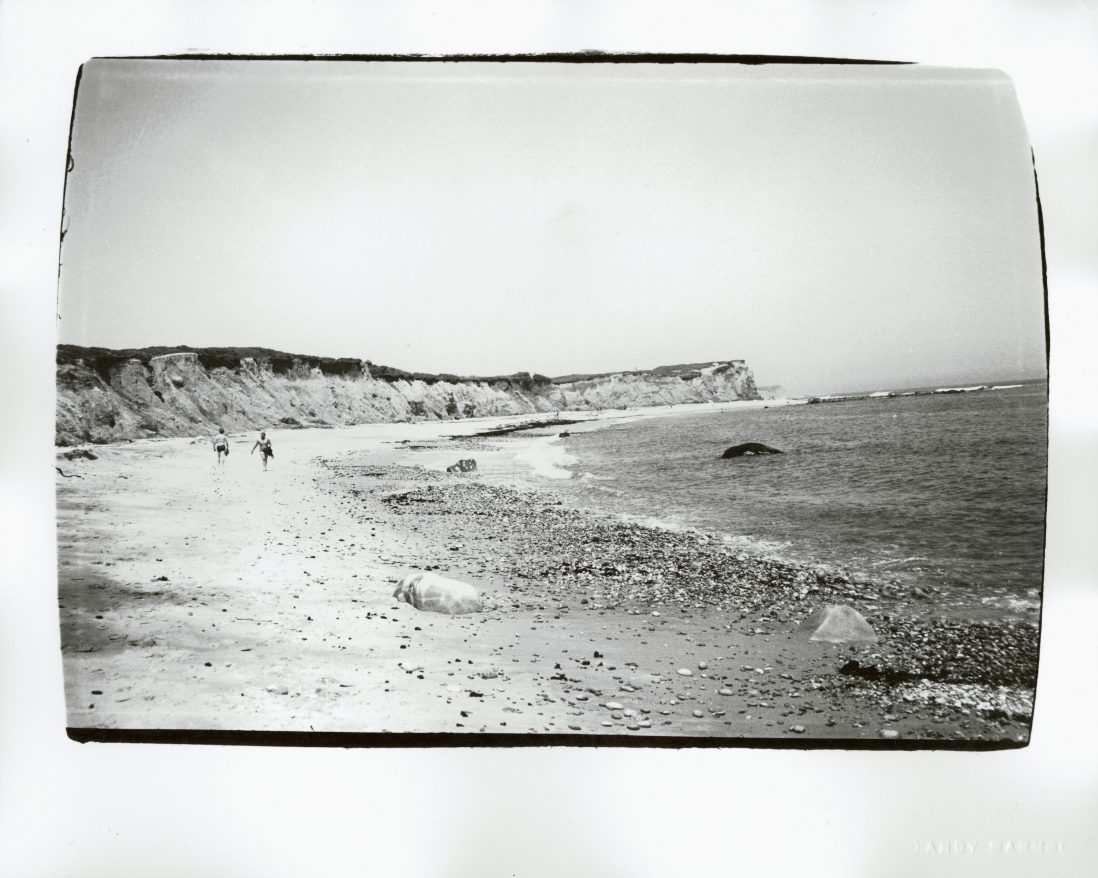
Andy Warhol, Embankment, 1982. Black and white print, 8 x 10 inches.

Andy Warhol, Artist'due south Materials, 1982. Polacolor ER, 4 ane/four x 3 3/eight inches.
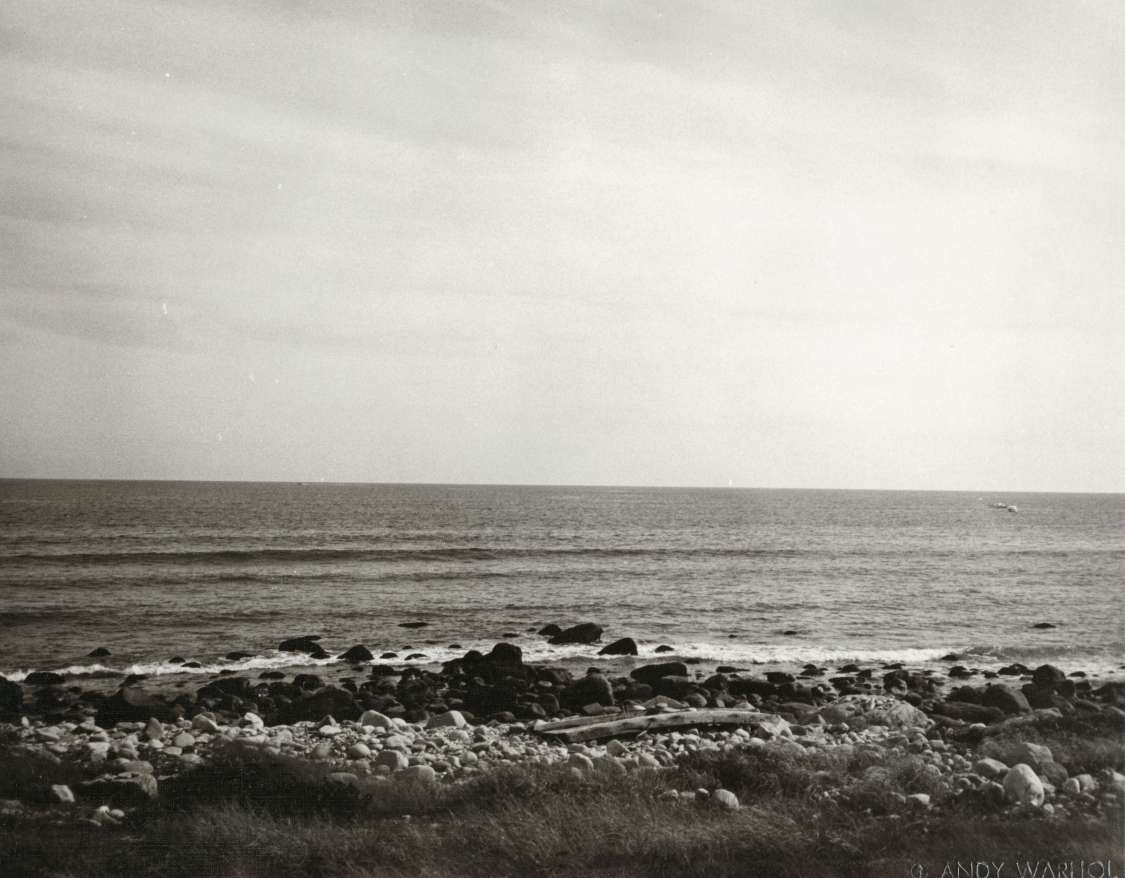
Andy Warhol, Montauk Beach, 1982. Blackness and white print, 8 x 10 inches.
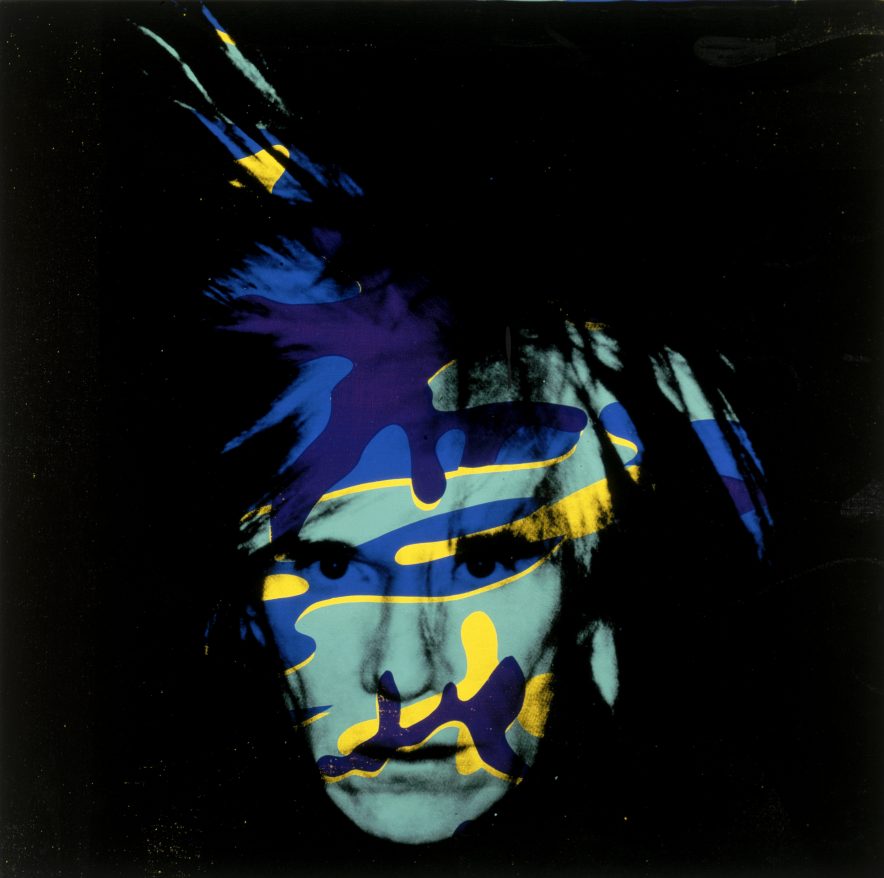
Andy Warhol, Self-portrait, 1986. Synthetic polymer pigment and silkscreen ink on canvas. forty ten 40 inches.
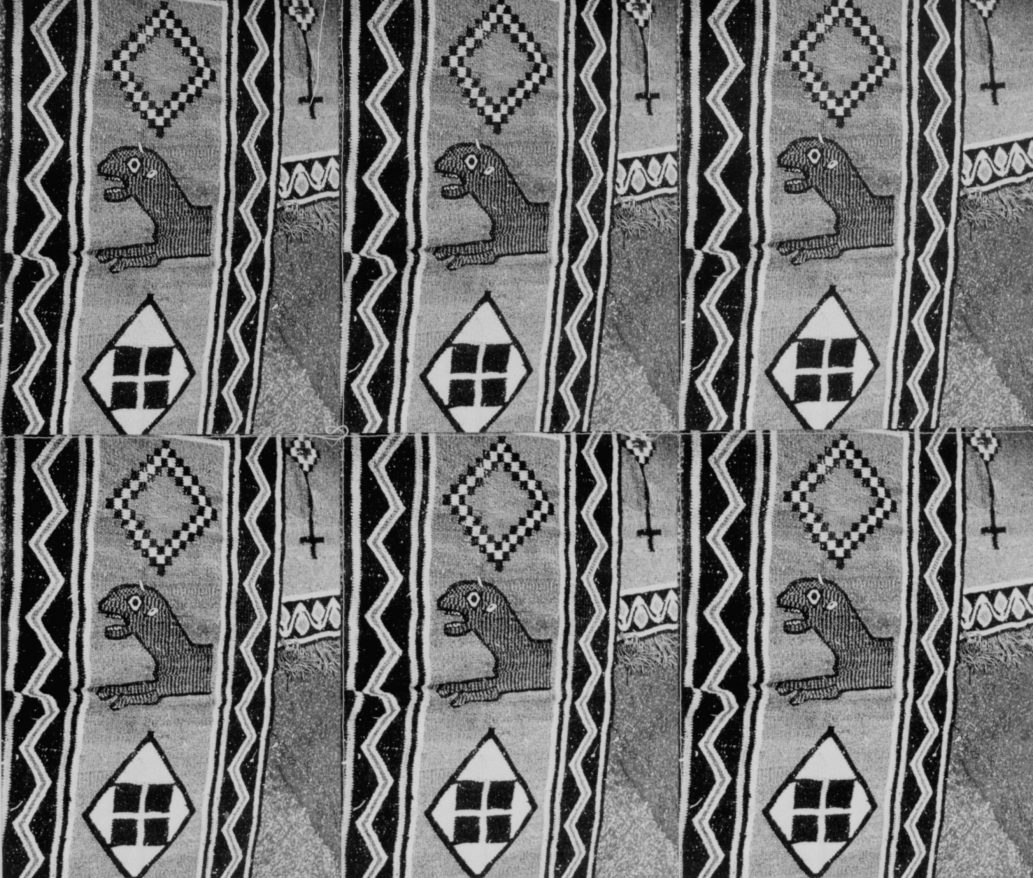
Andy Warhol, Woven Textils with Panthera leo 1976-86. Black and white print with thread. 27 3/viii x 31 5/8 inches.
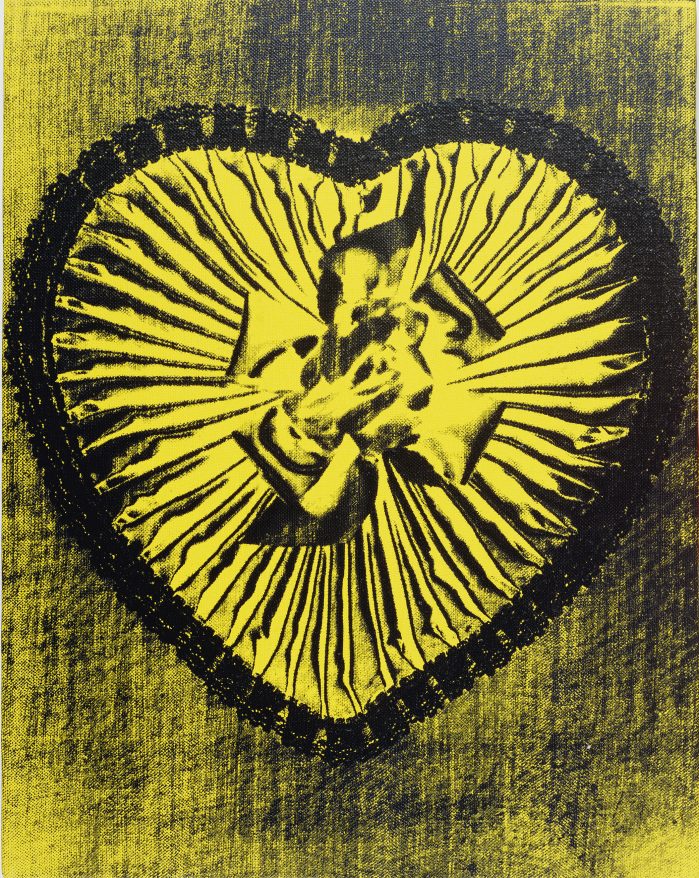
Andy Warhol, Middle with Bow, 1983. Synthetic polymer pigment and silkscreen ink on canvas. 14 x xi inches.
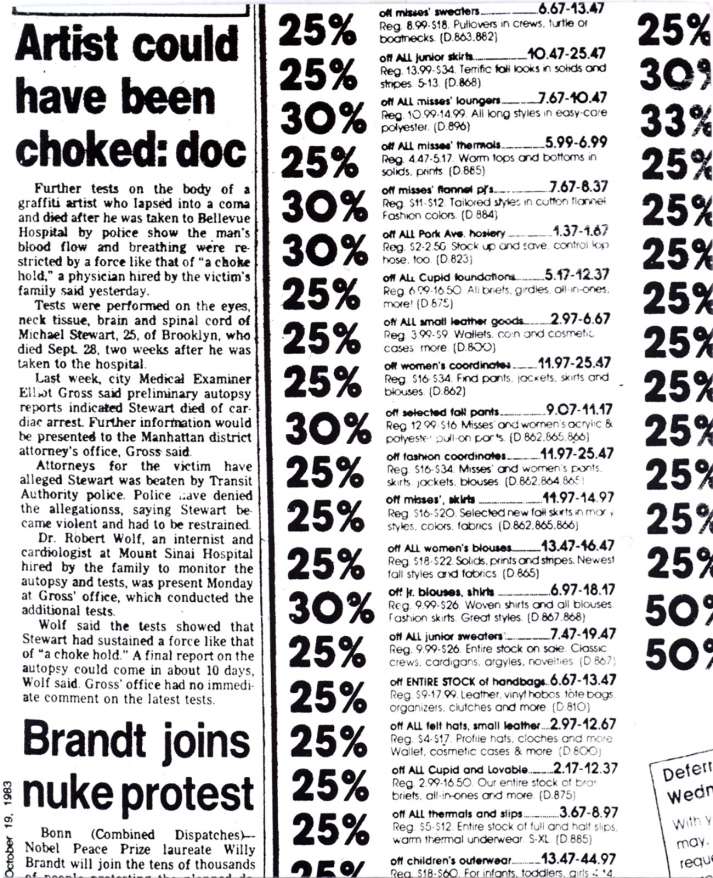
Andy Warhol, New York Mail service (Artist Could Have Been High-strung), mid- 1980s. Constructed polymer paint and silkscreen ink on canvas, 24 ten 20 inches.
As the owner of copyrights to artwork created by Warhol and trademarks for his proper noun and signature, the Foundation has been able to broadly communicate his legacy as a creative disruptor and cultural icon, using the tools of the mass media much in the way the artist did. Creative and thoughtful merchandising and advertisement collaborations with Perrier, Absolut Vodka, Dior, and Burger Rex, to name a few, have recontextualized for a new audition Warhol's open-minded embrace of fine art and commerce, elitist and populist image making, while also paying homage to his sophisticated propagation of himself as a brand. In the spirit of Warhol's democratic values, meanwhile, the Foundation has ensured that his images have been readily accessible for non-commercial employ by scholars, curators, and artists.
The fees generated from these innovative licensing initiatives, besides as from the carefully curated sales of artworks, contribute to an endowment that funds all of the Foundation's operations and philanthropy, from the catalogue raisonné to its grants. As an artist-endowed organization, the Foundation has never had to fundraise; all of the work it has been able to do extends from its founder'due south visionary generosity.
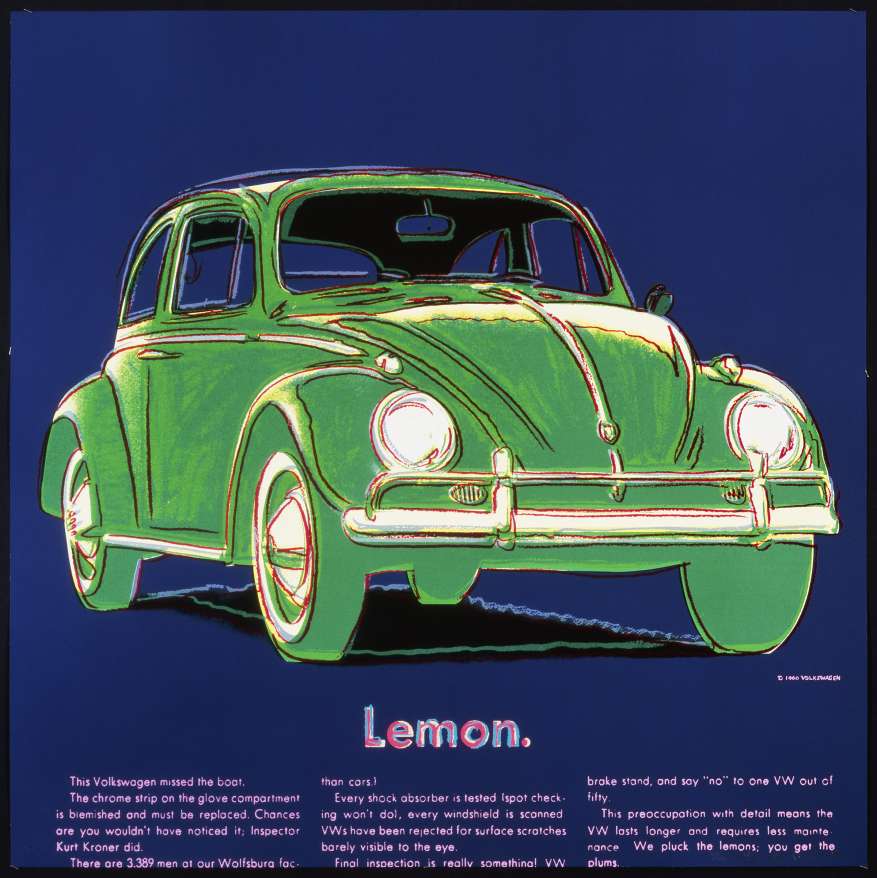
Andy Warhol, Ads: Volkswagen, 1985. Silkscreen print on Lenox Museum Board, 38 10 38 inches.
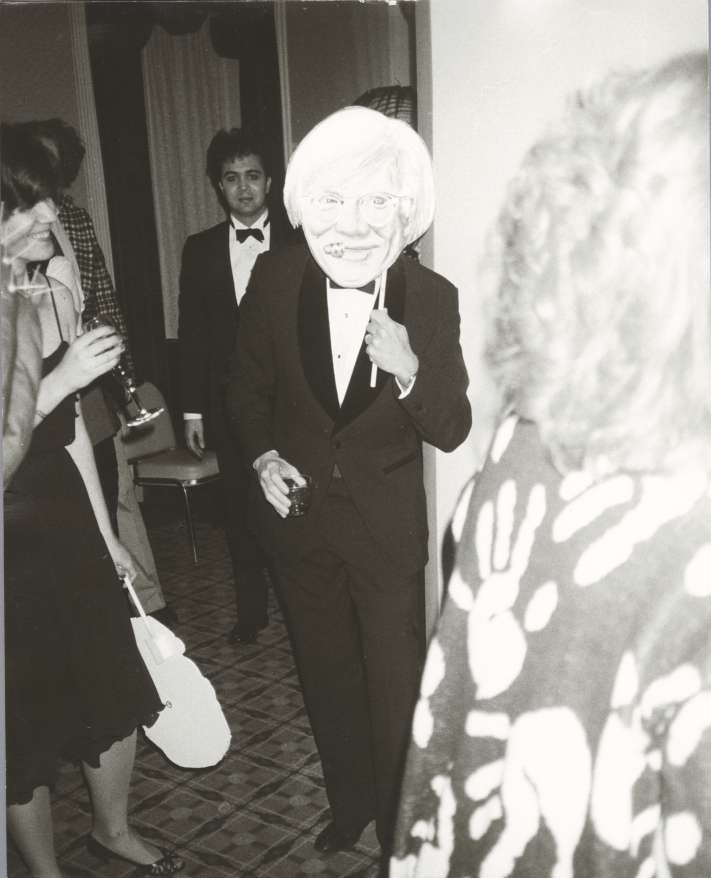
Andy Warhol, Andy Warhol Mask, 1985. Black and white print, 10 x 8 inches.
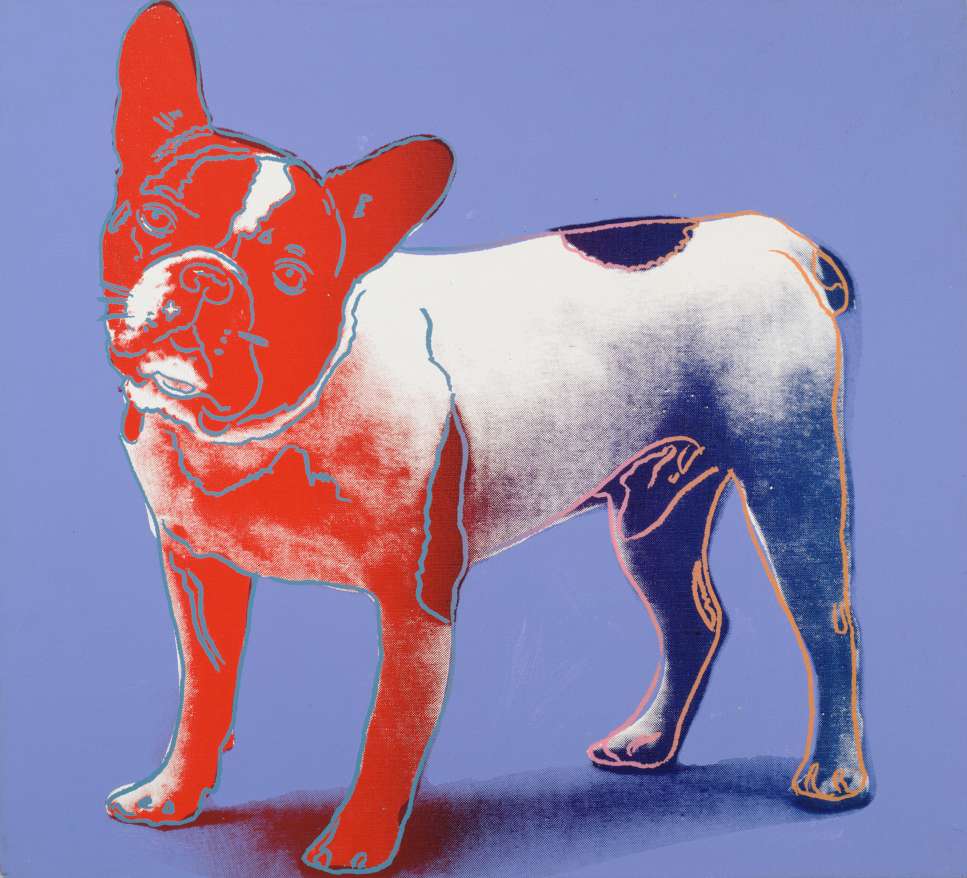
Andy Warhol, Yves Saint Laurent's French Bulldog (Moujik), 1986. Constructed polymer paint and silkscreen ink on sheet, 20 10 22 inches.
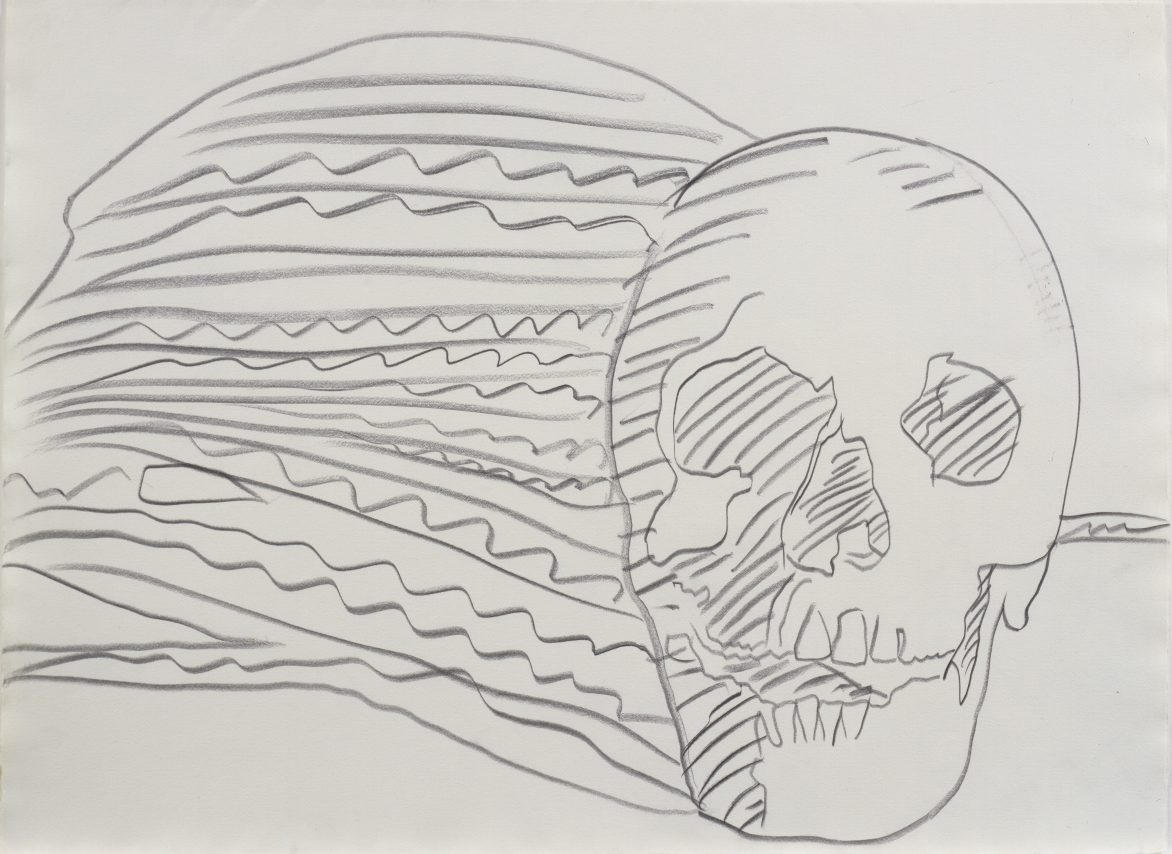
Andy Warhol, Skull, 1976. Graphite on J Green newspaper, 20 ane/2 x 27 7/8 inches.
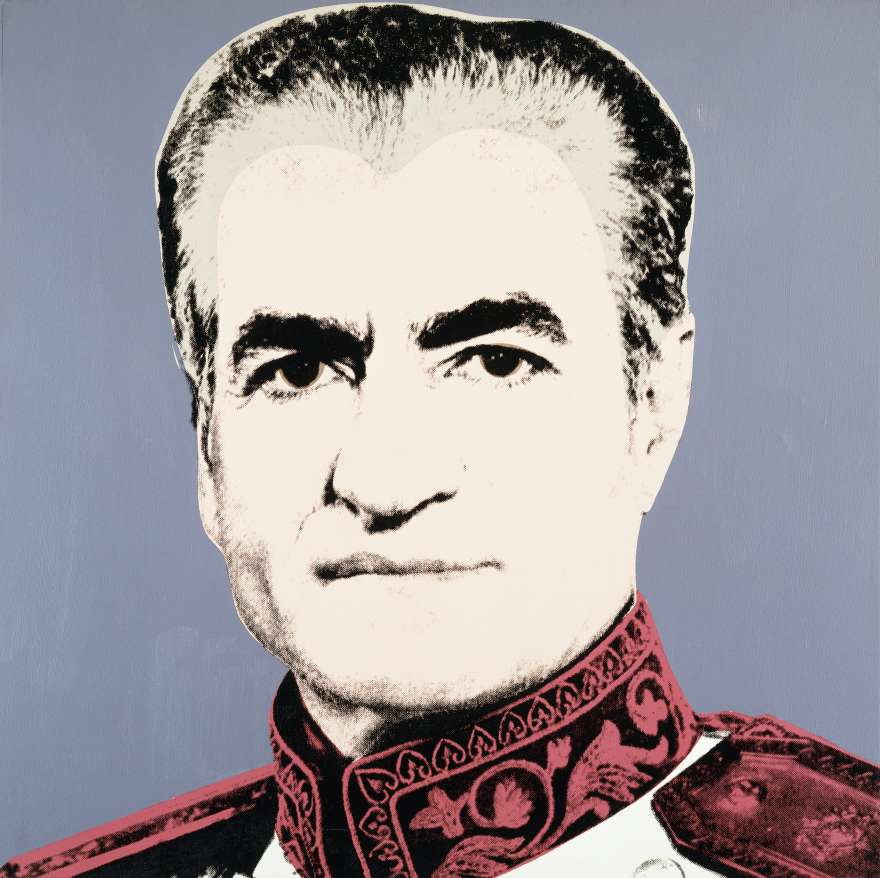
Andy Warhol, Shah of Iran, 1978. Synthetic polymer paint and silkscreen ink on sheet, 40 ten 40 inches.
"Few arts funders have the independence and clarity of purpose to defend the rights of artists and arts organizations to freely express hard, uncomfortable, fifty-fifty radical ideas equally courageously and consistently as the Andy Warhol Foundation."
John Taft, Vice Chairman, Baird































0 Response to "Warhol Foundation for the Visual Arts as Well as the National Endowment for the Arts"
Post a Comment